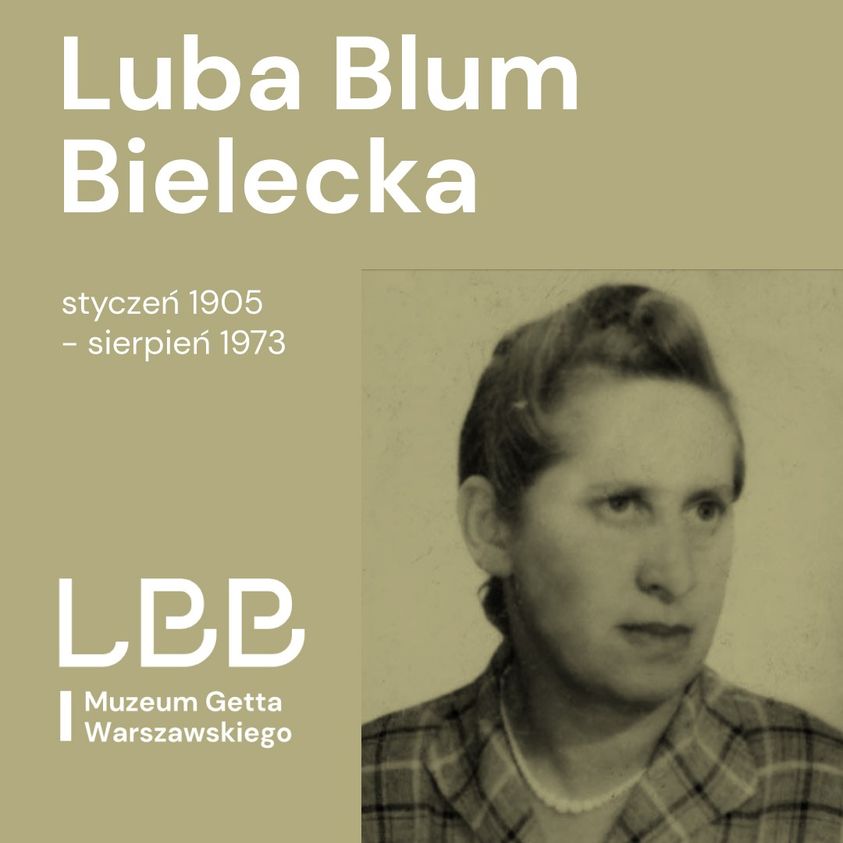Luba Blum Bielecka (01.1905/1906–08.1973)
nurse, social nursing instructor, activist

She was born into a traditional Jewish family as the eldest of ten siblings. She enrolled in a newly opened Jewish gymnasium in Vilnius. There she met her future husband, Abraham (Abrasza) Blum, a Bund activist from Warsaw. Soon after, she started operating in Cukunft – the youth branch of the Bund.
When Blum went to Gent, Belgium to study construction engineering, Luba Bielecka began her education at the Warsaw School of Nursing at the Jewish Hospital in Warsaw, from which she graduated in 1925. She also received training in the open health care department in Paris and Brussels. She trained nurses at the IX Health Center at Świętojerska St. After Blum returned from Belgium, the couple got married in Warsaw, where they lived at Mylna 9 St.
After the outbreak of World War II, thanks to the efforts of Blum-Bielicka, the Nursing School continued its activity. In November 1941, the school was moved to the Warsaw ghetto, to a building located at the corner of 1 Mariańska and 34 Pańska Streets. After the ‘Great Liquidation Action’ in 1942, the school was moved to Gęsia 33 St. The students of the school gained both theoretical and practical knowledge, taking care of patients on an ongoing basis. Blum-Bielicka hoped that the school would survive in the ghetto, but her hopes were ruined when, during the deportation action in January 1943, the Germans seized the building and brutally murdered the patients and staff. Blum-Bielicka survived by hiding in a basement with her children. As a result, she decided to leave the ghetto; she crossed to the ‘Aryan’ side just before the outbreak of the uprising. Her husband, a co-organizer of the underground in the ghetto and a fighter in the uprising, was murdered by the Gestapo after leaving the ghetto in May 1943. Blum-Bielicka managed to survive the war thanks to fake documents.
After the end of the war, on behalf of the Central Committee of Jews in Poland, Blum-Bielicka managed the Orphanage in Otwock, and in 1949 she became the director of the Nursing School No. 3 in Warsaw. For her activities during the war, she was awarded the Florence Nightingale medal. After leaving Poland for the United States, she started working at the New York Hospital. She died in 1973 and was buried in the main alley of the Jewish cemetery on Okopowa Street in Warsaw.
translated by Adam Grossman
